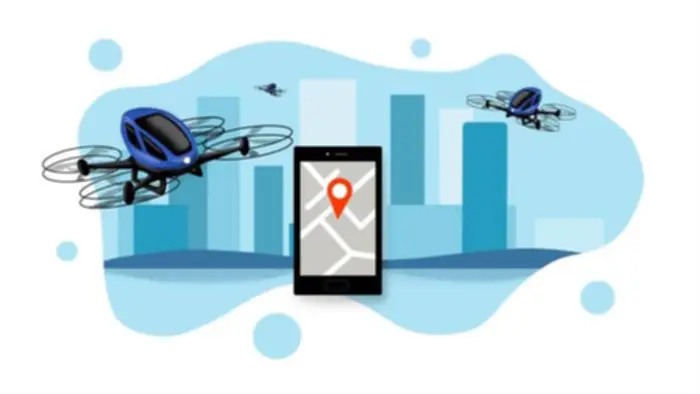Now, generally hybrid integration platform you’d discover that a non-public cloud is equated with on-premises, but this isn’t totally right. A private cloud is a cloud devoted solely to at least one business entity or one group; nevertheless, it could be hosted on- as nicely as off-premises. So, for the sake of our question, it would be extra right to say that hybrid cloud structure encompasses numerous cloud environments (public and private) and conventional knowledge middle infrastructure. ONEiO is a cloud-native integration service provider connecting individuals, processes, and instruments – enabling seamless collaboration without traditional integration trouble. Hybrid integration is the method of configuring on-premises and cloud-based purposes to work collectively seamlessly. It’s about making a mesh of different companies that communicate with each other, no matter where they reside.

Using Microservices To Implement A Hybrid Integration Platform Solution

You can also create a data inventory inside this resolution and easily switch data into data warehouses. Integrate.io is a cloud-based tool that helps private and non-private clouds, on-premise, and internet-based knowledge. You can quickly deploy this answer and get started with data pipeline creation without worrying about system configuration, upkeep, and updates. The graphical, intuitive person interface makes it easy for technical and non-technical users alike to construct highly effective data pipelines. Though an integration Platform as a Service can shortly ingest small a great deal of information, it lacks many key features that would classify it as an ‘all-in-one’ data transformation tool.
Control And Dominate Is A Vain Sentiment In A Vertical-based Group
PaaS, or Platform as a Service, provides a whole platform for developing, operating, and managing functions without the necessity for infrastructure administration. It offers tools, runtime environments, and frameworks for developers to construct, test, deploy, and scale their functions. On the opposite hand, iPaaS, or Integration Platform as a Service, focuses on integrating different purposes and techniques in a cloud surroundings.
- Whenever a customer-facing worker comes throughout a shopper issue, it’s crucial that they make the appropriate personnel aware of it as quickly as possible.
- To allow you to accomplish that shortly and without relying on your developers, the HIP ought to present an in depth collection of pre-built software connectors.
- Over the final several years the demand for model new integrations has far surpassed the capacity most enterprises can deal with.
- In an HIP, “integration models” check with the precise entities you’re integrating, which embrace purposes, knowledge, and business processes.
- Hybrid Integration Platforms supply a powerful and flexible answer for modern enterprises, permitting them to overcome today’s integration challenges and adapt rapidly to new alternatives.
- They have other priorities, and, in plenty of circumstances, they won’t know one of the best ways to design and implement them.
Hybrid Integration Platforms And Saas Integrations
API management inside Hybrid Integration Platforms is essential for ensuring secure, efficient, and scalable data change between disparate applications. It streamlines the mixing course of by securing APIs, simplifying access with thorough documentation, managing versions for compatibility, and monitoring efficiency. Additionally, it controls API site visitors by way of fee limiting, sustaining system integrity. This performance is pivotal for blending conventional and trendy applied sciences within a HIP, facilitating seamless interoperability, and enhancing organizational agility.

App, Knowledge, And B2b Integration Features
The less complicated the integration process is, the better—seamless integration is the top aim, after all. Now you’ve outlined the hybrid strategy you wish to take and regarded alternate options to your plans, it’s time to gauge the hybrid cloud infrastructure options at your disposal. Before you can start optimizing your hybrid strategy, you must take the time to create it. Consider the hybrid cloud method from as many angles as you’ll have the ability to, ensuring it’s sensible, attainable, and efficient for your business. For example, you might have a hybrid cloud deployment that features both private and non-private clouds, or a mix of cloud and on-premises techniques.
Messaging And Event-driven Architecture
On the flip facet, iPaaS offers a more agile method to enterprise software integration. With a ton of pre-built connectors and templates, iPaaS can quickly connect numerous enterprise platforms making certain real-time knowledge synchronization and course of automation. However, this selection could be problematic when making an attempt to combine with legacy enterprise software program or you’re seeking to create customized workflows for homegrown solutions. With HIP, software integration is usually considered via a broader lens, encompassing each traditional on-premises techniques and up to date cloud-based solutions. This hybrid approach ensures that businesses can create seamless connections between legacy applications and newer, cloud-native ones. The strength of HIP lies in its capacity to bridge the gap between different generations of IT infrastructure, offering a unified integration layer.

According to Gartner, there are only some of the over 100 iPaaS firms have the capabilities, so we needed to simplify the analysis course of for you. According to Gartner, typically, traditional integration instruments aren’t in a place to address the complexity of hybrid integrations. Therefore, hybrid integration platforms are usually enterprise iPaaS (EiPaaS) tools that can facilitate integrations between any endpoints. In other words, a hybrid integration platform ought to present organizations with the entire tools they need to make it less complicated and simpler to combine data and purposes across any on-premises and multicloud setting. With information silos broken down, businesses have an unbelievable alternative to show their information into actionable insights, allowing them to make better selections quicker.
When integration architects are creating a solution, they should concentrate on creating integration orchestration and transformation whatever the nature of the built-in purposes. This approach allows the solutions could be built and managed separately from the core answer, in addition to change and take away interfaces simply as needed. Business leaders are continuously on the lookout for new ways to remodel their organizations by utilizing expertise and data to drive innovation and business results. But before you’ll have the ability to think about deriving insights or building seamless buyer experiences, you first need to attach and standardize all of the data across your entire application panorama.
Some objects that aren’t on this listing may be unmissable for you depending on your supposed use cases, during which occasion you have to add those to your criteria too. Data integration centralizes data from various sources, bridging the hole between on-premises and cloud environments. Its crucial perform is to ensure data consistency and availability, supporting knowledgeable decision-making and operational effectivity.
Depending on the case, generally it could be fairly challenging to connect these completely different purposes and take care of the different data requirements, protocols, and all the opposite things that come to integrations. Hybrid Integration Platforms supply a powerful and versatile answer for modern enterprises, allowing them to overcome today’s integration challenges and adapt rapidly to new alternatives. With improved business agility, flexibility, safety, and collaboration, HIPs are reworking the finest way organizations handle their IT landscape and drive digital transformation. Hybrid Integration Platforms allow IT and enterprise groups to work collectively more successfully by providing a unified platform for managing integrations. Through visible design tools and different collaborative features, non-technical customers can participate in the integration process, liberating up IT sources and fostering innovation inside the organization. As cloud-native technologies mature, HIPs will more and more support serverless computing and event-driven architectures.

